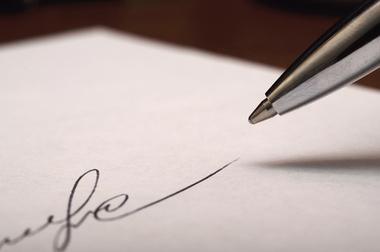Sometimes, though, the occasion calls for something more formal. Whether it’s a letter to your political representative about an important issue, a cover letter to a potential boss, or a business proposal letter, these require a bit more care if you’re going to be taken seriously. As a lawyer, I write many formal letters each week, and there is an art to doing it well. Here are a few points to keep in mind when you’re writing your own formal letter, whether it will go through the mail or via cyberspace.
1. Understand your purpose.
Why are you writing? What do you want the reader to do after reading your letter? Do you want to change her mind or convince him to take a specific action? Are you seeking forgiveness? Do you mean to complain about bad service or a faulty product? Are you trying to get hired? What’s the “ask”? Once you know this, you can — and should — cut everything out that doesn’t serve that purpose.
2. Identify your audience.
Knowing your audience helps you choose your language and target your ideas more precisely. I write differently in a letter to another lawyer than I do when the addressee is a non-lawyer executive or even an elderly “pro bono” client. In a letter to the editor, your real audience is the publication’s readers—who are they? (Keep in mind that most newspapers are written at an 8th or 9th grade reading level.) Don’t use jargon that your reader won’t understand.
3. Keep it short.
Most of us endure a constant flood of written communications, and we have a limited amount of time to spend reading it. You therefore have a better chance of being read if you keep your letter to one page. A multi-page letter with long paragraphs and complex sentences looks overwhelming. The busy reader will be tempted to set it aside for when she has more time—and she might never get around to picking it up again. Use short paragraphs, short sentences, short words.
4. Use simple language.
It’s the writer’s job to be understood. Even if your audience is highly educated, you should avoid big words and long, complex sentences. People aren’t stupid; they’re busy. Make our job easier, and we’re more likely to give your letter the attention it deserves. Formal writing does not require the use of big words. Don’t try to sound sophisticated; try to be clear. Use “ask” instead of “request.” Say “buy” instead of “purchase.” Instead of “enclosed herewith please find,” just say, “I’ve enclosed” or “Here is. . . .”
5. Lead with the most important point.
As journalists say, don’t bury your lead. Find a way to open with the idea or information that you most want your reader to focus or act on. The first paragraph might be the only one he reads, so don’t hide the “ask” in the last paragraph.
6. Follow the rules.
There are rules for formatting a business letter. You ignore them at your peril.
7. Proofread. Then proofread again.
No matter how grammatically gifted you are, errors and typos can creep in. When you think you’ve finished writing, read your piece slowly and attentively, watching for those typos. Don’t trust spellcheck. If possible, print a hard copy of your letter and read it—out loud—with a pen in hand, marking those typos, awkward sentences, confusing lines. If it’s really important, have somebody else read it and let you know if you’ve missed something.
8. Let it cool before sending.
Especially if you are writing to persuade or complain, you probably are motivated by some pretty strong feelings. Absolutely write your first draft in the white-hot heat of passion. Express your feelings. Get it all on paper. But then . . . before you print and sign, or hit send, walk away for awhile. Go do something else. Let that heat of passion cool. Then come back and re-read what you’ve written. Is it fair? Is it smart? Is it true? Is it kind? Would you regret having it read on television, in front of your boss and your grandmother? Make the changes that seem appropriate after your emotions have settled. Then, and only then, hit send. What have I missed? What is your stickiest communication challenge? Your questions and suggestions are invited. (Photo credit: Signature via Shutterstock)
